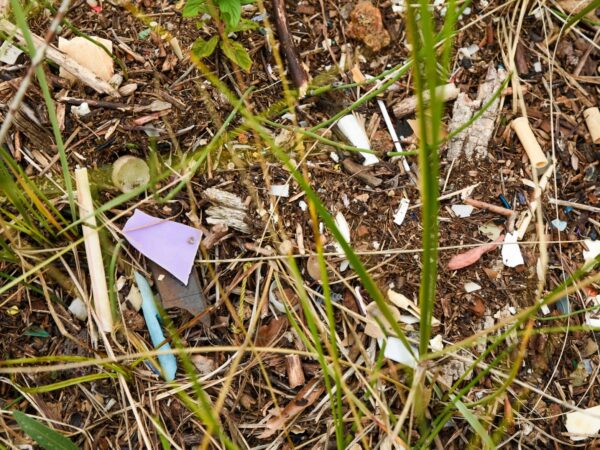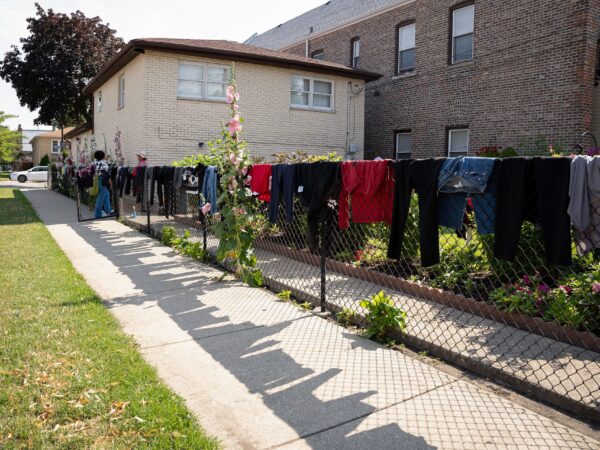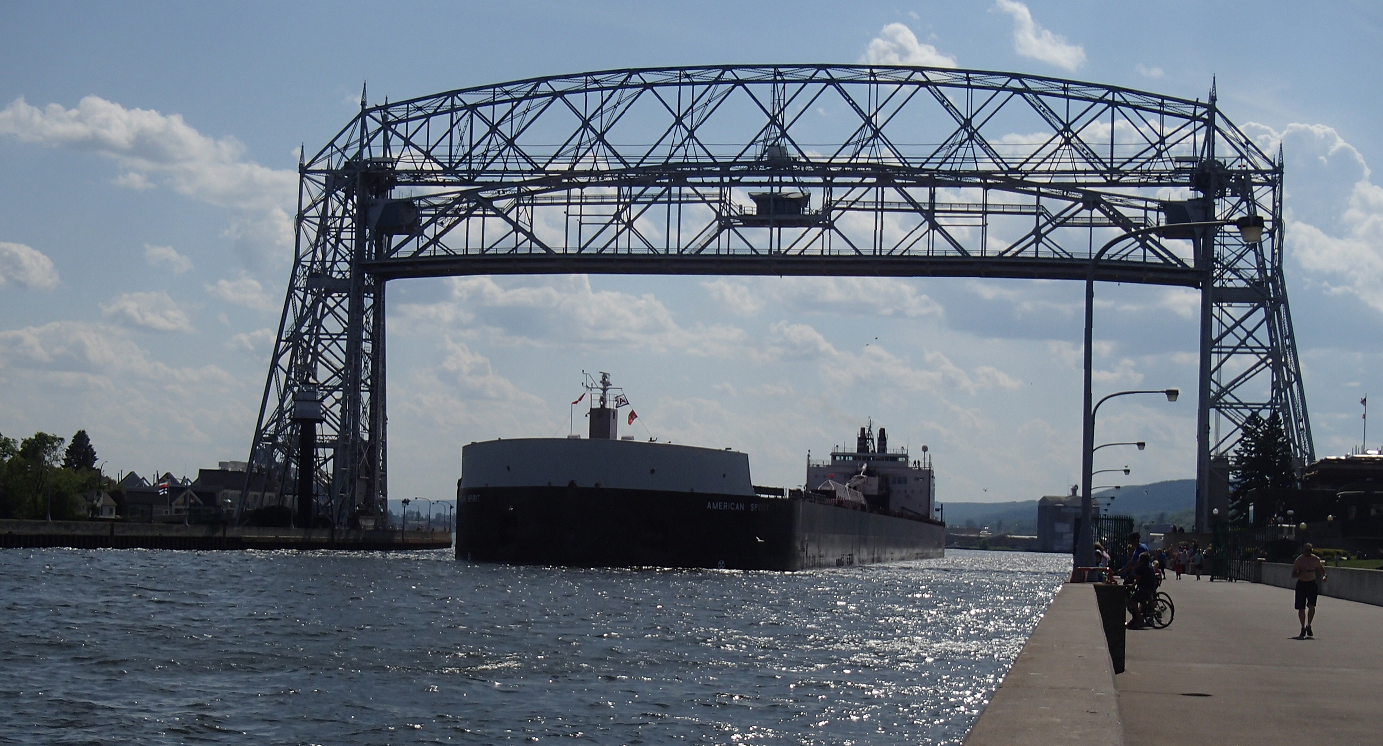
Federal funding is the No. 1 priority as port executives look to better connect to communities
Great Lakes shipping industry leaders are united on their priorities heading into the 2019 season with securing funding for the Soo Locks at the top of the agenda.
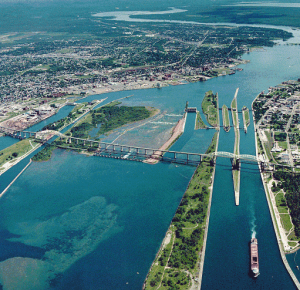
Aerial picture of the Soo Locks, Photo by U.S. Army Corps of Engineers via wikimedia
The locks, the connector between Lake Superior and the lower Great Lakes, “serve the economy of the region,” Steve Fisher told attendees at the Great Lakes Waterways Conference in Cleveland earlier this month.
Fisher directs the American Great Lakes Ports Association, and the conference’s annual agenda is targeted at the Great Lakes maritime industry.
Fisher was echoing the comments of Lake Carriers Association President James Weakley who had emphasized the need for the industry to keep up the pressure on Congress to fund the Soo Locks $800 million project.
To date, Congress has appropriated $32 million to get initial work started but the balance has to come from future annual budgeting processes, which can be uncertain in a changing Washington political environments.
Fisher compares the process to opening a checking account. By passing legislation for the new lock, Congress and the president have opened the account but still must put money in the account for the lock.
Fisher says funding the locks may be a “victory in moving parts” meaning going through the rigors and political risks of the annual budget process.
Weakley has previously told Great Lakes Now that with predictable funding, the new lock could be built in seven years and be under budget. But gaps in securing funding could stretch the project to a decade and cause it to be over budget.
Fisher noted the importance for the public in the Great Lakes region to continue to pay attention to the funding process. When the lock received initial federal approval there was a flurry of announcements from elected officials proclaiming victory but the need for ongoing funding approval received scant attention.
Infrastructure backlog
While a new Soo Lock has been in the spotlight, Fisher said there is a backlog of $320 million in repairs for jetties that protect Great Lakes harbors and ports in all states. Some $160 million for dredging could also improve waterfront infrastructure.

Pedestrians can access the shipping channel where freighters enter and exit Duluth, Minn.’s port, Photo by Sandra Svoboda
Great Lakes ports mostly operate out of the public eye so it’s hard for people to make a direct connection to them and their economic contribution, according to Fisher.
But the Port of Duluth is one exception.
Residents of that Minnesota city can look down the hill at the port and see lake freighters and the port in operation which allows for an ongoing connection to the port’s importance to the region.
The industry, Fisher said, has thought about educational outreach to illustrate the value of ports to the public but said it’s expensive and limited funding is better spent working with Congress on the needs of the industry.
A ray of hope for ports, Fisher said, is the nascent cruise ship industry which he called an “untapped market.” He said there is demand by cruise customers to explore the region which bring them to ports like Muskegon. That west Michigan city is in the process of remaking its lakefront and is undergoing a renaissance from its industrial legacy past.
Fresh perspective
Only two years on the job, Illinois International Port District Director Clayton Harris said it’s important to look at ports in a different way.
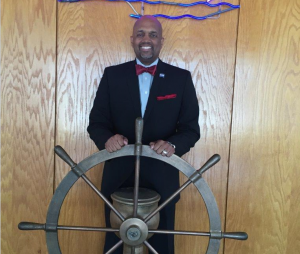
Clayton Harris III, Executive Director Illinois International Port District, Photo by IIPD via Gary Wilson
“Think transportation” not just water transport, Harris told Great Lakes Now in a phone interview. He said it’s important to see the role of ports in “linking transport systems” that include rail and road.
The Illinois port is second only to Duluth in the region for the amount tonnage processed annually. Harris said when the public sees a new building or roadway the raw material probably passed through a port.
The Illinois port was described as a “backwater in the (Illinois) region’s transportation network” when Harris took the director’s position in 2016.
Harris said he didn’t accept the “backwater” designation but saw the port as an asset that was not being fully utilized.
“My role is to be more aggressive in developing the port,” Harris said.
Harris has held executive positions in the Illinois and Chicago transportation departments and said he has contacted new Illinois Gov. J.B. Pritzker to discuss ways the port can be developed.
Great Lakes Now Program Director Sandra Svoboda contributed to this report.
Featured Image: A freighter leaves Duluth, Minn., heading out to Lake Superior, Photo by Sandra Svoboda



